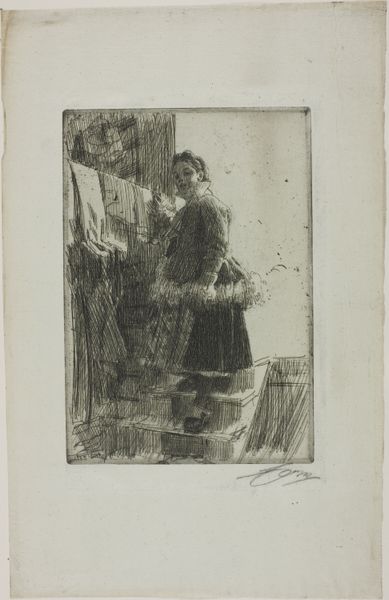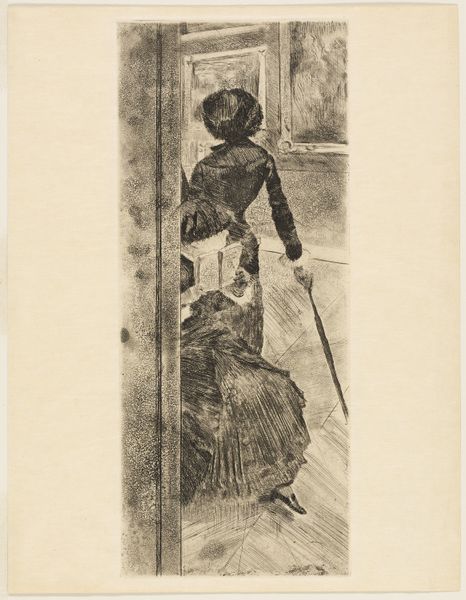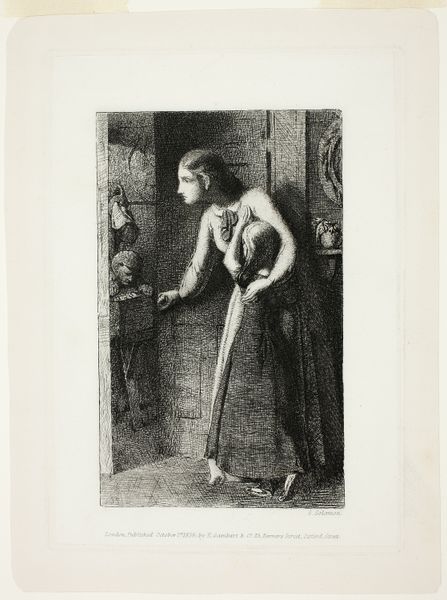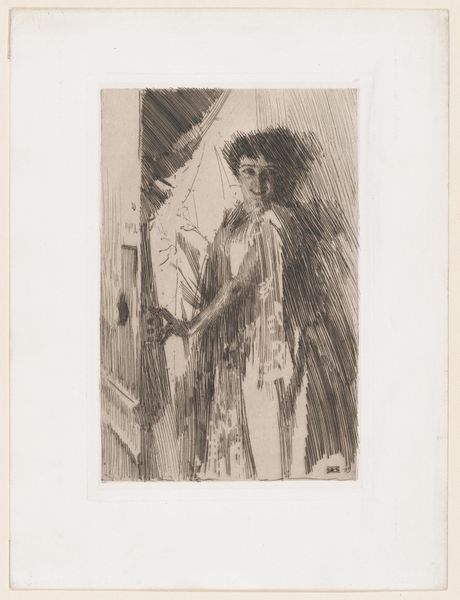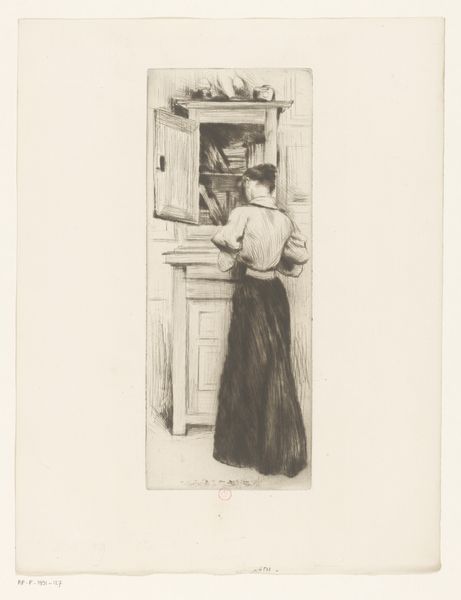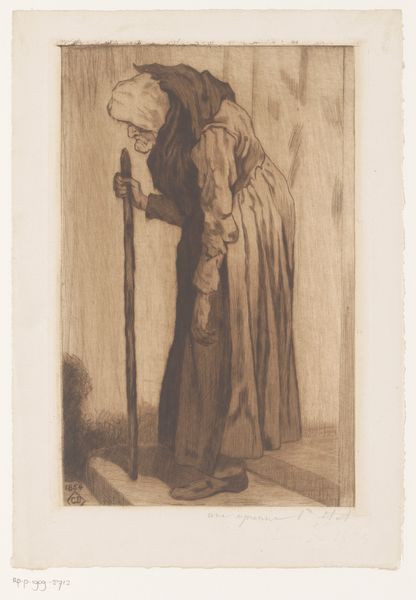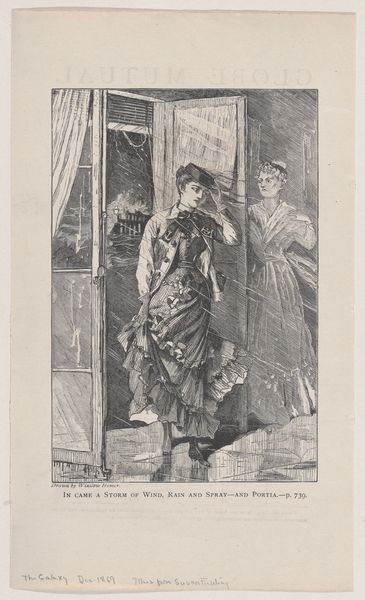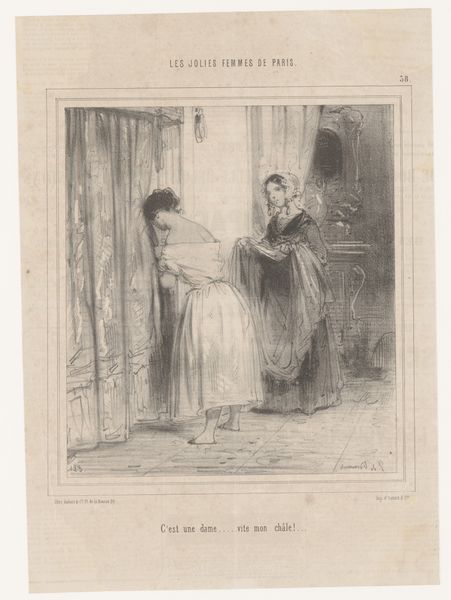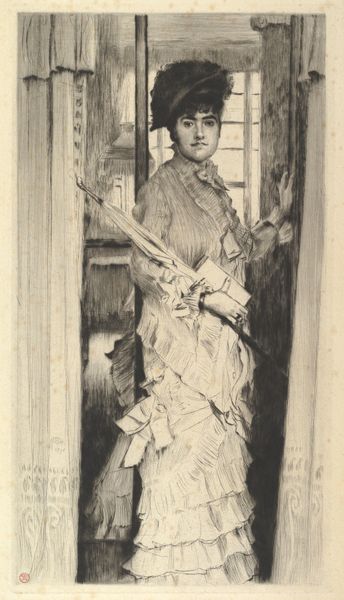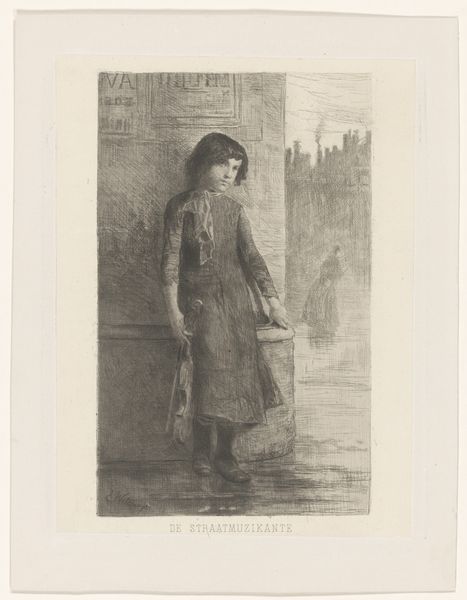
drawing, print, etching, paper
#
portrait
#
drawing
# print
#
etching
#
paper
#
intimism
#
genre-painting
#
realism
Dimensions: 298 × 198 mm (image/plate); 370 × 280 mm (sheet)
Copyright: Public Domain
Curator: Let’s turn our attention now to Anders Zorn’s etching from 1909, “The New Maid,” which resides here at the Art Institute of Chicago. Editor: I am immediately drawn to the contrast of light and shadow and the textured, almost unfinished quality of the lines. It gives it a sort of poignant, unpolished feel, wouldn’t you say? Curator: Indeed. Zorn was a master of suggesting form with minimal lines, creating tonal variation with densely worked cross-hatching in the shadowed regions and leaving untouched spaces for highlight. This particular style situates him firmly in the tradition of Realism, offering insight into his world. What strikes me is the woman's attire, reflective of the social stratum occupying her role within a 20th-century household. Editor: You are right. There’s something quietly powerful about the gaze that makes you wonder about her role and agency in society and in this specific household. This feels far more introspective and probing than just genre painting. What else do we know of its origins? Curator: The historical accounts indicate a keen interest of Zorn’s, focusing on contemporary subjects drawn from everyday life. And etching allowed him a unique way of replicating imagery quickly to disseminate his vision widely. Notice also the rather awkward positioning. The coat and rack behind the maid serve as important markers within her life. She's very much in the servant's milieu, yet has great pride. Editor: So, her character appears rooted and revealed both intrinsically and externally? Curator: Precisely. Her pose and the meticulous arrangement of light emphasize not just physical likeness but a psychological space too. It begs the question whether or not it's more revealing about the state of early 20th century Europe rather than the subject herself. Editor: Considering Zorn's personal narrative within that societal landscape offers us an entry point into appreciating that cultural exchange, allowing us a glimpse into his epoch. It serves as both documentation and artistic commentary. Curator: A profound meditation on labour, visibility, and the lives of women in early 20th century domestic spaces, wouldn't you agree? Editor: Absolutely. And this meticulous etching ensures it all sits with you long after you move on to the next piece.
Comments
No comments
Be the first to comment and join the conversation on the ultimate creative platform.

